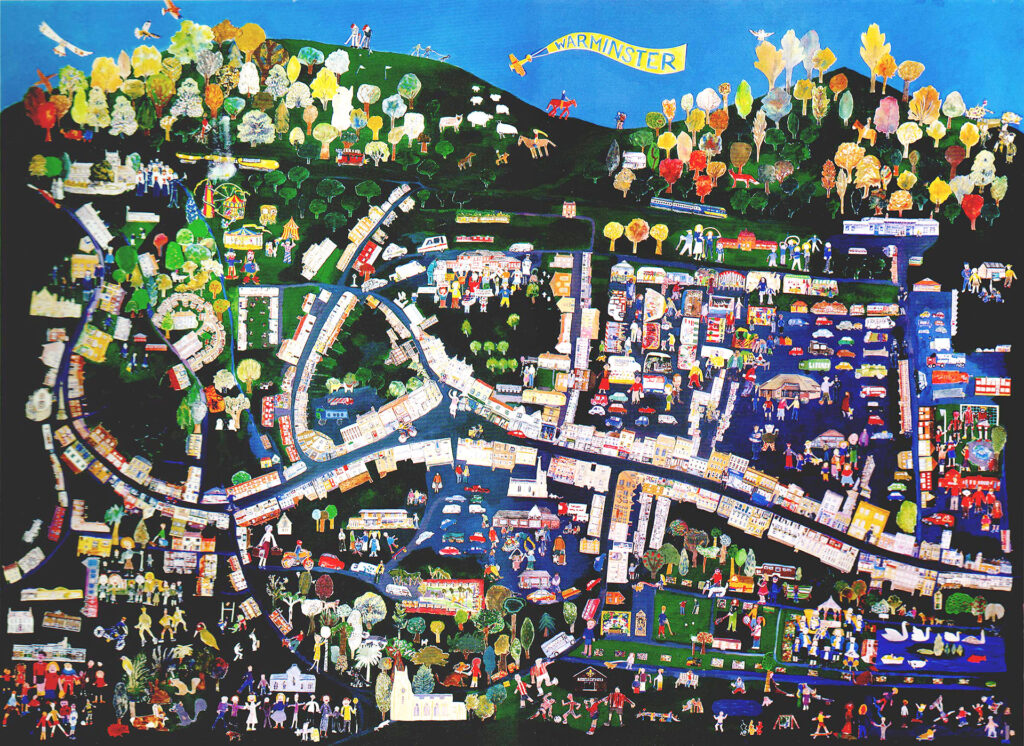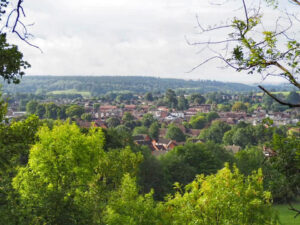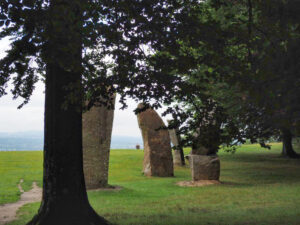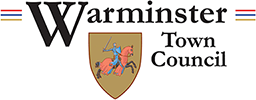Warminster History
A brief history of the old market town of Warminster, Wiltshire, UK
Warminster, with its ‘background of brooding hills’, is a small market town attractively situated on the edge of Salisbury Plain. The town has a population of over 23,000, including the residents of Warminster Garrison, a military garrison of the British Army.

The town of Warminster began in Saxon times as a small settlement within the loop of the Were stream, but people were living in the area during prehistoric days – the surrounding hills feature Iron Age remains, while at Pitmead, a meadow by the river Wylye near Norton Bavant, the remains of two Romano-British buildings were first discovered in 1786. The Domesday Book (1086) suggests a population of 400 in Warminster. A grant of a market had been made by 1204 and although the growth of the town was gradual to begin with, the corn market held here was soon successful. By the middle of the 17th century it was the ‘greatest corn-market by much in the West’ and the fame and fortune which continued was encouragement for other trades such as malting, cloth production and iron founding. Corn and cloth gave rise to much of the architecture we see in the town centre today. The coming of the railway to Warminster in 1851 accelerated the decline in trade. The Corn Exchange built in 1855 slowed down the decline for a few years but by 1900 the great days of the corn market were well and truly over. Since then Warminster has looked to its links with the garrison, along with some light industry and tourism as the way forward.

Portway House, now converted into residential apartments, dates back to the early 1700s and was built for the Middlecotts, a family of local clothiers. In 1820 they sold it to Longleat along with 500 acres remaining of the original Newport Manor. From 1958 to 1981 it was used as the town’s library and the offices of the Urban District Council.
The Obelisk, a triangular monument of Bath stone at the junction of Silver Street, Church Street and Vicarage Street, was erected in 1783 to commemorate the enclosure of the parish. It stands on the site of the former Emwell Cross Barn and features a fountain (now disused) in the shape of a lion’s head. The cattle troughs at the base are now planted with flowers. The monument is floodlit at night.
Warminster has long been associated with military activity from the Civil War years to the Warminster Loyal Association during Napoleonic times and to the period when several Warminster men enlisted for the Boer Wars in South Africa and later in the two world wars. Five years prior to the outbreak of the First World War, the 10th Wiltshire Volunteer Rifle Corps (Warminster) was absorbed into the Wiltshire Regiment. During the Second World War, the townsfolk served at home and abroad and some, mainly from farming backgrounds, who had joined the Wiltshire Yeomanry, saw active service in Northern Africa and Italy. Meanwhile back in Warminster during the latter part of the War, the town was used as billets by American troops.

At the junction of the Avenue and Portway stands the town’s War Memorial, a tall Iona type cross of Box-ground Bath stone standing 21 feet high and incorporating interwoven rope work and Egyptian art. The names of 115 men who gave their lives during the First World War are commemorated. It was designed by Warminster stonemason, Egerton Strong, whose ancestors had worked with Sir Christopher Wren on the rebuilding of St. Paul’s Cathedral after the Great Fire of London. The Warminster War Memorial site was donated by the 5th Marquess of Bath and 2,000 people attended the unveiling of the monument on Sunday 29th May 1921. The monument was re-dedicated on 6th November 1949 when the names of 52 townsmen who had paid the supreme sacrifice during the Second World War were added. In 2010 the grounds around the Memorial were landscaped and extended to incorporate a small area of waste ground, benches installed and a sculpture erected to represent the First World War trenches. Access was improved to enable the less mobile to enjoy the new garden. The extended War Memorial was re-dedicated at a ceremony attended by the Mayor, Councillor Sue Fraser, on 11th November 2010.







